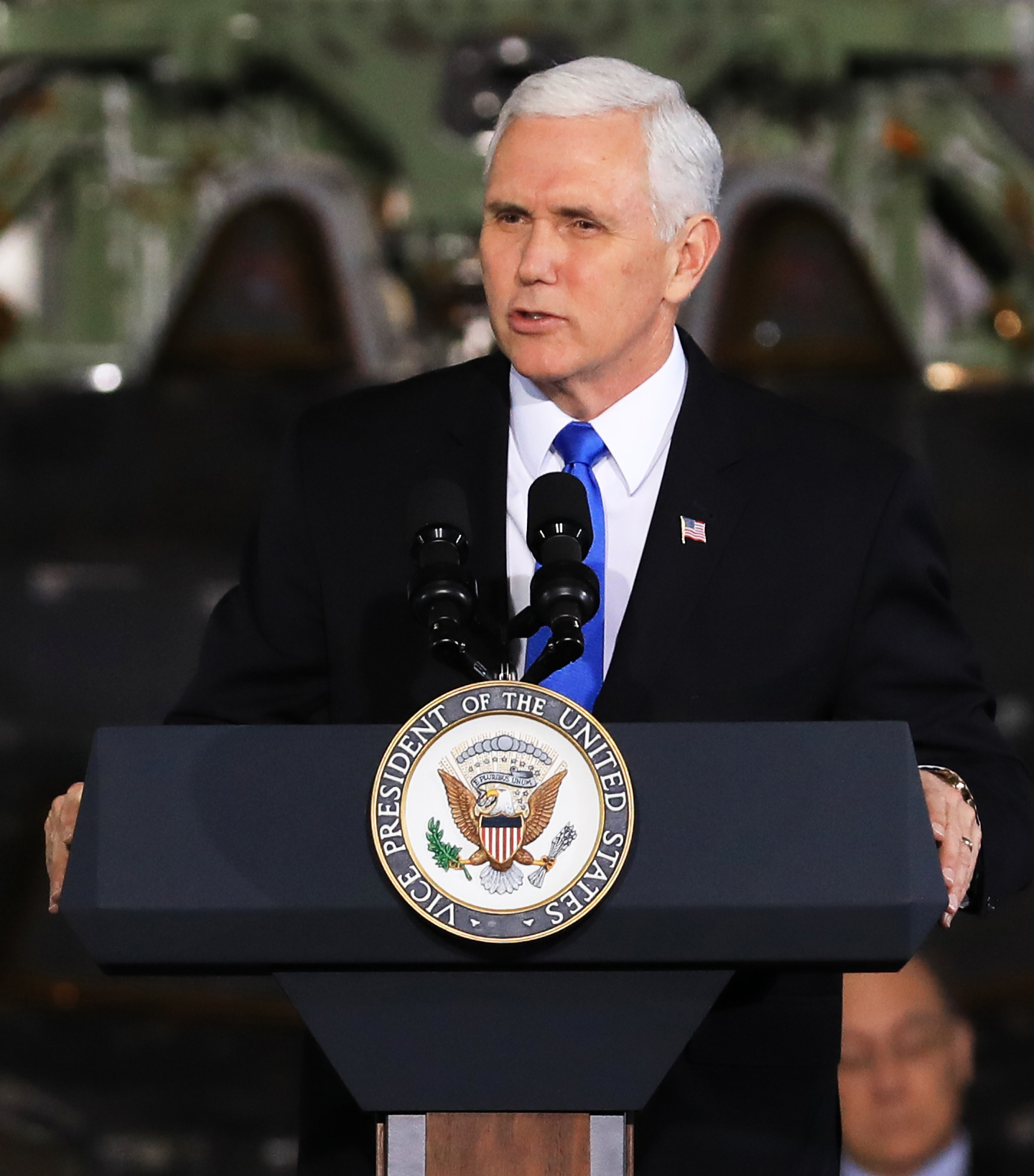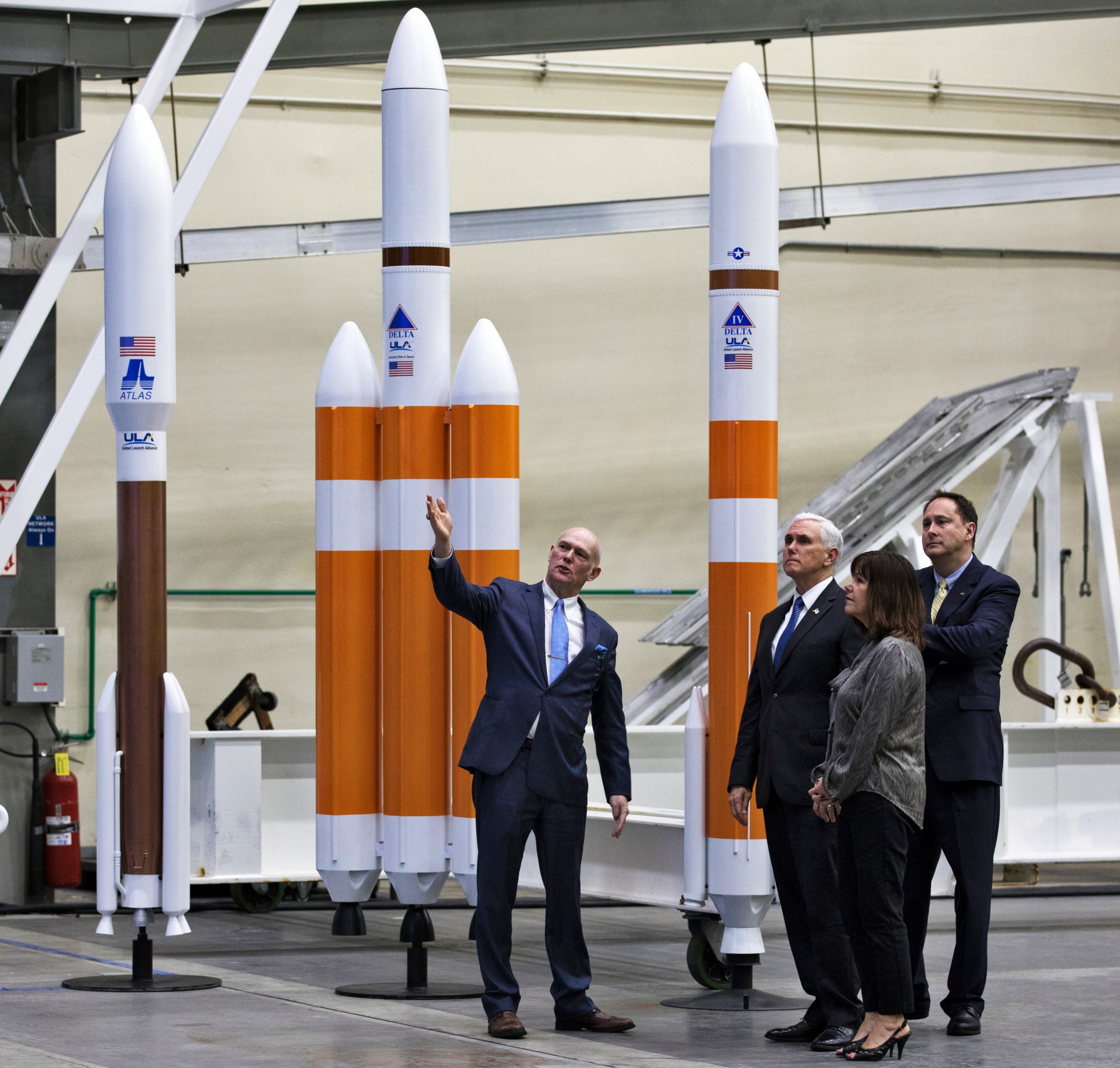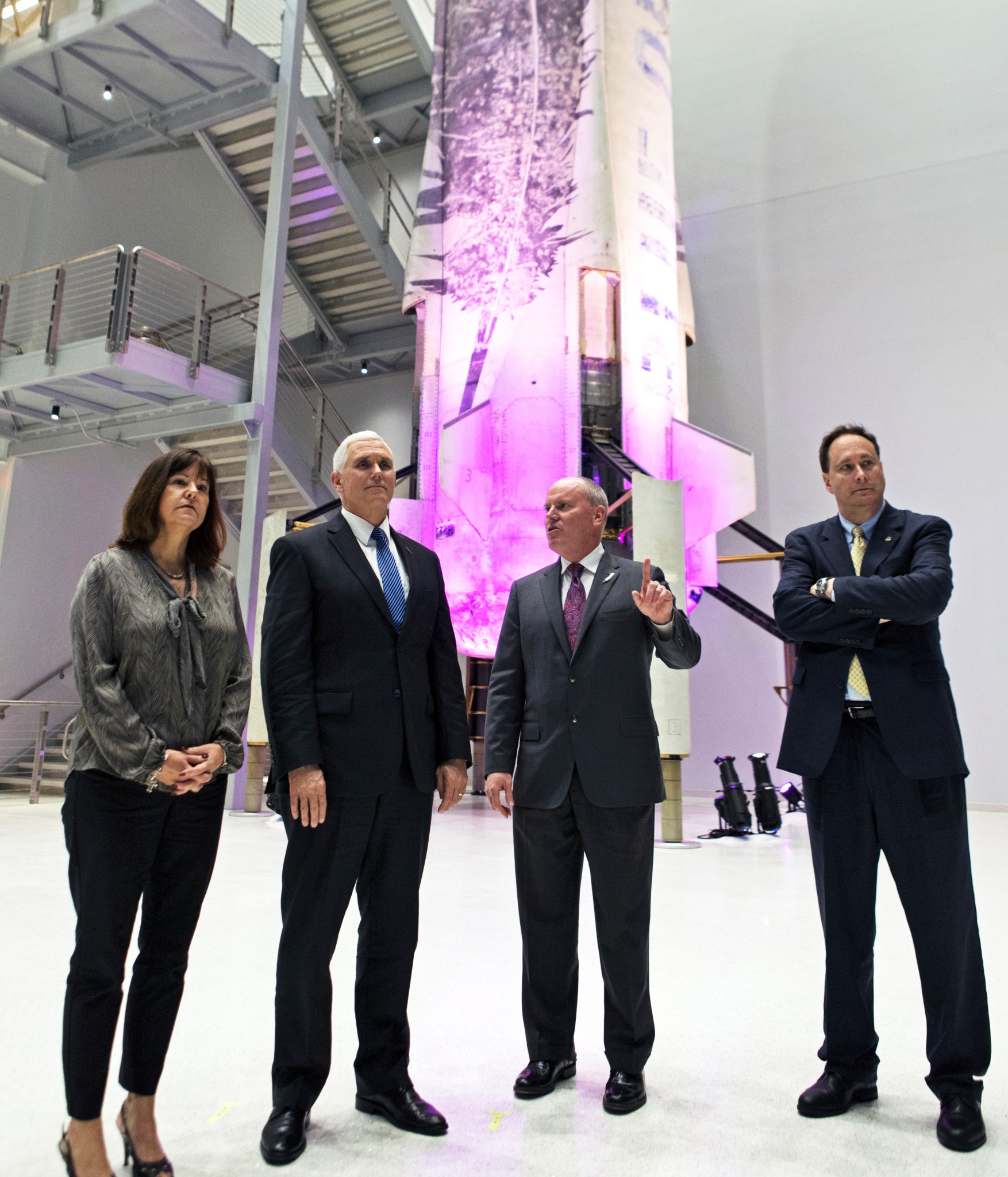By Bob Granath
NASA’s Kennedy Space Center, Florida
Vice President Mike Pence returned to NASA’s Kennedy Space Center in Florida on Feb. 20, this time to chair a meeting of the recently re-established National Space Council.
During his first trip to Kennedy on July 6, 2017, Pence spoke to center employees and toured numerous facilities supporting ongoing work at the premier, multi-user spaceport. After his arrival this time, Vice President Pence visited facilities at both Kennedy and Cape Canaveral Air Force Station. He also participated in an aerospace industry reception.
Watch this video as Vice President Mike Pence tours the Kennedy Space Center, America’s premier, multi-user spaceport.
But the primary focus for the vice president’s trip was the second meeting of the National Space Council taking place Feb. 21 in the high bay of the center’s Space Station Processing Facility. The event’s theme was “Moon, Mars and Worlds Beyond: Winning the Next Frontier” and included testimonials from leaders in the civil, commercial and national security sectors about the importance of the United States’ space enterprise.
Vice President Pence noted that in December 2017, President Donald Trump signed an executive order that “makes it a national policy of the United States to return to the Moon, put Americans on Mars and bring renewed focus to human exploration in space.”
Looking back to 1961, Pence recalled the flight in which Alan Shepard became the first American in space and, only eight years later, Apollo 11 astronauts were the first humans to walk on another world. The vice president then took a view ahead to a new era in space exploration.
“It’s here today, in the 21st century, that the modern marvels that launch from these grounds will prove that the public and private sectors are achieving far more today than we ever have before,” he said.
The National Space Council’s role is to advise the president on America’s space policy and strategy, and review the nation’s long-range goals for space activities. The council includes leaders in government from both civil and military space programs.
The council’s historic roots go back to the earliest days of NASA when the agency was established in 1958. Through 1973, it was known as the National Aeronautics and Space Council. From 1989 to 1993, the group was the National Space Council, guiding NASA and helping achieve the agency’s ambitious milestones.
On June 30, 2017, President Trump signed an executive order re-establishing the National Space Council to streamline and coordinate national space policy.
“We re-launched this National Space Council, an organization of vital importance to America’s future in space that had laid dormant for a quarter of a century,” Pence said.
The first meeting of the new National Space Council took place Oct. 5, 2017, at the Smithsonian National Air and Space Museum’s Steven F. Udvar-Hazy Center in Chantilly, Virginia. Afterward, acting NASA Administrator Robert Lightfoot praised the vice president for calling for renewed U.S. leadership in space with NASA helping lead and shape the way forward.
“NASA has been directed to develop a plan for an innovative and sustainable program of exploration with commercial and international partners to enable human expansion across the solar system, returning humans to the Moon for long-term exploration and utilization, followed by human missions to Mars and other destinations,” he said.
Discussions during the current National Space Council meeting included President Trump’s Fiscal Year 2019 budget request of $19.9 billion for NASA.
“It (the budget) reflects the administration’s confidence that through NASA leadership, America will lead the way back to the Moon and take the next giant leap from where we made that first small step nearly 50 years ago,” Lightfoot said an a recent message to agency employees.
Vice President Pence also noted the expanded role of commercial companies called for in the president’s budget.
“It redirects government support of the International Space Station by 2025 and encourages Americas pioneering space companies in the private sector to increase their activity in low-Earth orbit where the government will be a partner and a customer, not a competitor,” he said.
Pence explained that the president has directed NASA to extend its exploration expeditions to the outer reaches of our solar system.
To do that, NASA’s Space Launch System (SLS) and Orion continue in development as critical backbone elements for the effort and for moving farther into deep space. SLS is a new heavy-lift rocket that will be capable of sending humans aboard Orion back to the Moon with an eye toward the Red Planet.
Noting the ongoing work at NASA’s multi-user spaceport, Vice President Pence praised the men and women who work there.
“Much more than the bridge to space, Kennedy Space Center is the bridge to the future,” he said. “I know that America once again will astonish the world with the heights we reach and the wonders we achieve.”
Click on the link below to view the recommendations of the Feb. 21, 2018 meeting of the National Space Council.
Additional Resources
Watch the full meeting: https://www.youtube.com/watch?v=H0K4bLFVQ1w
Download other resources: https://www.nasa.gov/mediaresources





























